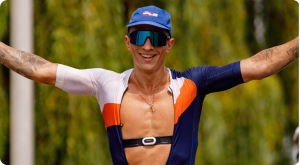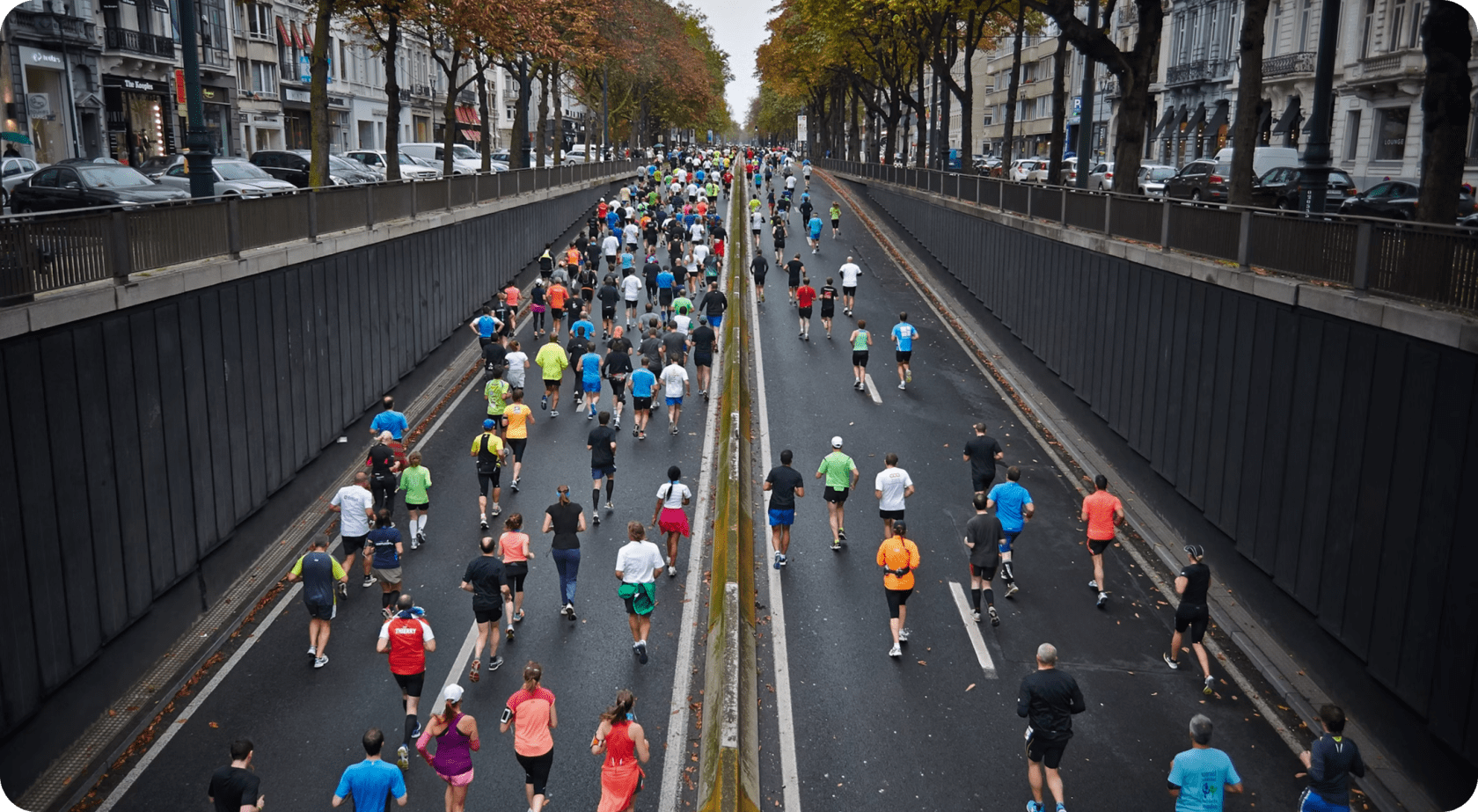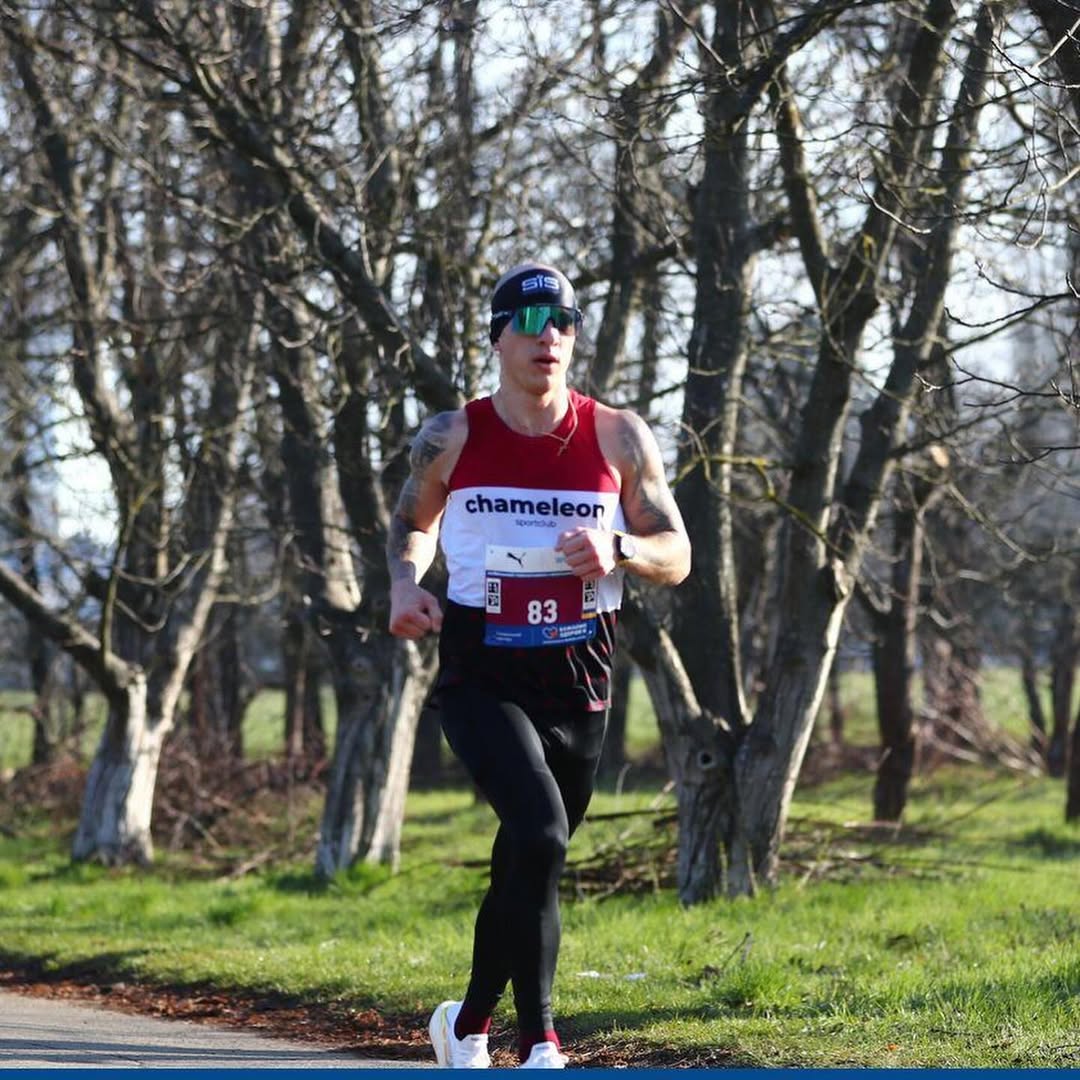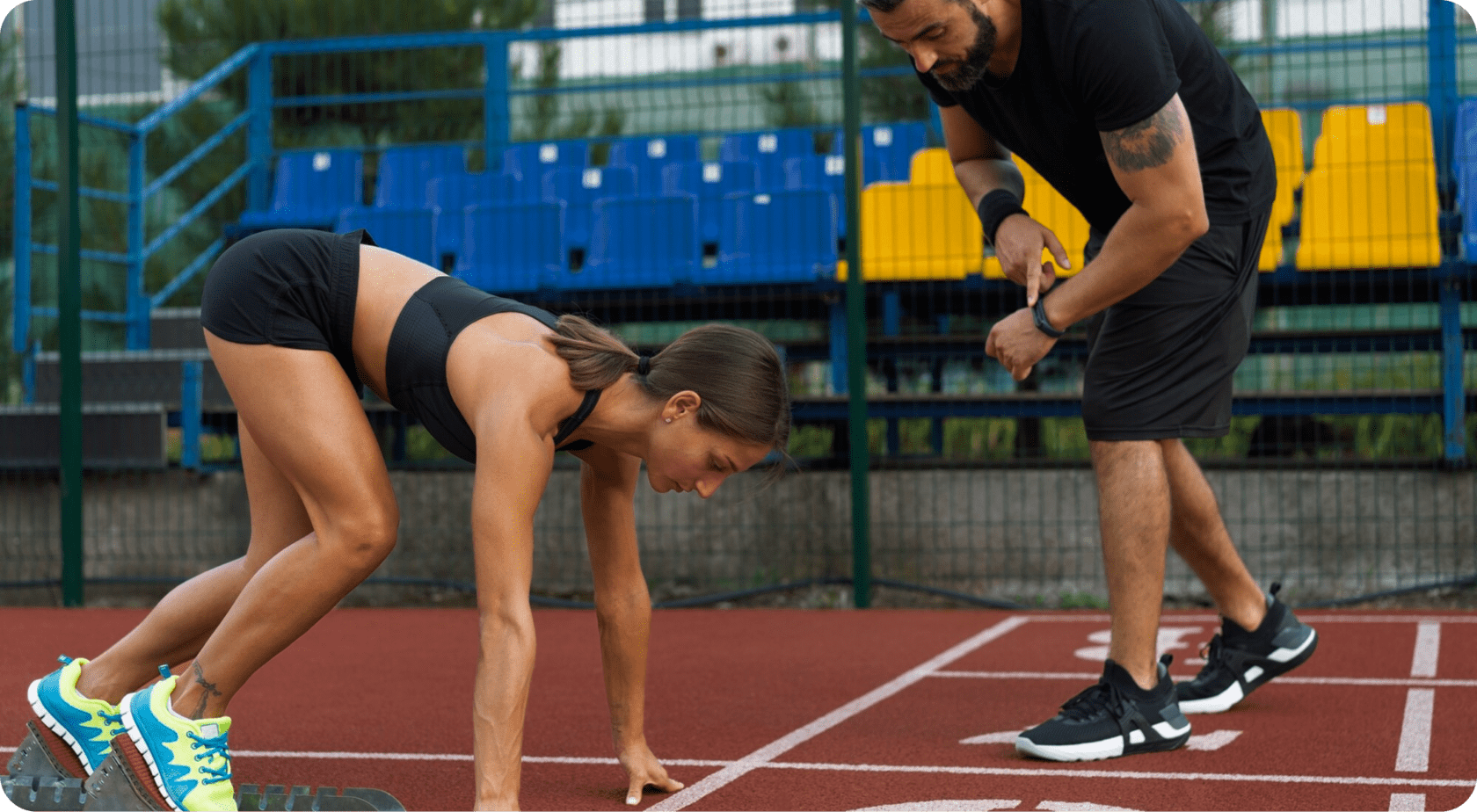There are three different types of cramps.
- Stomach cramps — happen as you overeat or drink before a run.
- Muscle cramps — happen because of dehydration and insufficient carbohydrate intake.
- Side cramps or stitches — happen as we breathe too short, fast and shallow, or if there is an imbalance of electrolytes.
Raise your hand if you have ever suffered from muscle cramps when running.
1 out of 3 athletes says they suffer from muscle cramps often.
The most common spots for muscle cramps are the feet, front of thighs, back of thighs, and calf muscles.
Athletes over 35 tend to cramp more often. And, according to studies, men get more muscle craps than women (because they complain more often — just kidding!).
Muscle cramping is actually a little bit of a controversial topic.
In this article, we will explore muscle cramps, their causes, and how you can prevent muscle cramps.
If you’re wondering how to carry water when running, this article breaks it down for you.
Understanding Muscle Cramps
What is a muscle cramp, exactly?
American Academy of Orthopaedic Surgeons identifies muscle cramps as an involuntary contraction of a muscle that occurs suddenly and does not relax.
Cramps can affect any muscle in our body. They can involve a part of a muscle, a whole muscle, and even several parts of muscle groups at once.
Muscle cramps are usually temporary, but they are often painful and may negatively impact your running.
There are various reasons why you may experience muscle cramps. Let’s explore exercise-associated muscle cramps (EAMCs).
Causes of Exercise Associated Muscle Cramps
Unfortunately, there is no exact reason why muscle cramps happen.
There are two theories as to why we get cramps.
The first one is the dehydration electrolyte theory.
It says that if you lose a lot of sodium and don’t replace it, it causes a fluid shift in the body that results in muscle cramping.
A lot of runners feel it and pursue this theory. In fact, an electrolyte drink does help to immediately feel better.
However, the logical question rises: If it is just dehydration, why don’t you feel it in your entire body? Why is it always leg cramps?
There is also little to no scientific evidence that electrolyte deficit causes muscle cramp.
This BJSM study, for example, looked at whether muscle cramps during long-distance running are caused by dehydration or changes in electrolyte levels, like sodium or magnesium.
Here’s what they found:
- They studied a group of runners, some of whom experienced cramps during a race and some who didn’t.
- They measured things like body weight, hydration, and electrolyte levels before and after the race.
- The results showed no major differences in hydration or electrolyte levels between the runners who got cramps and those who didn’t.
While there were small differences — like slightly lower sodium and higher magnesium in those who cramped — these weren’t big enough to be the cause of the cramps.
In simple terms, the study suggests that muscle cramps during running aren’t necessarily caused by dehydration or low electrolytes.
Read our expert breakdown of magnesium’s role in muscle recovery and performance in our article on magnesium for athletes.
So, just drinking more water or taking electrolyte supplements might not be the key to preventing cramps.
This leads us to the second theory.
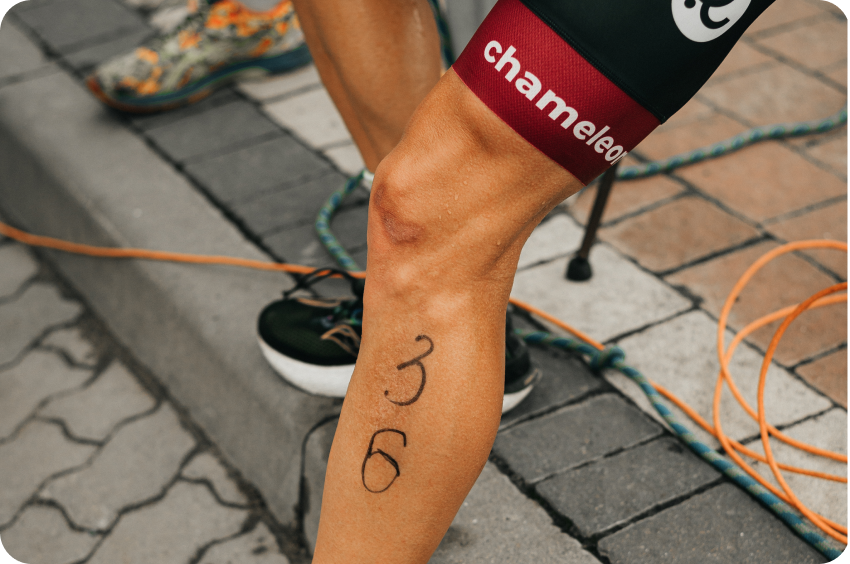
The neuromuscular theory basically says it’s the nerves, not the muscles, that cause muscle cramps.
So, your muscles cramp specifically because they are overworked, overused, and fatigued due to electrical misfiring.
That is why you potentially get cramps in your races but almost never in training.
You are overworking those muscles, and you don’t have the ability to react and adapt to faster paces or longer distances. So, they start cramping.
How can you determine whether you are cramping because of dehydration or because of neuromuscular fatigue?
Here are a few questions to help you figure out the reason behind muscle cramps.
- Are you hydrating regularly? Have a good electrolyte balance? This will tell you if you are hydrated enough.
- Is it an extra hot or humid race? Chances are that this is a dehydration issue.
- Do you cramp only in racing and never during your training runs? That’s probably the neuromuscular fatigue issue.
- Are you not training enough for the race and feel muscle spasms after? That’s must be the neuromuscular fatigue issue.
Other reasons behind muscle cramps include poor muscle strength, previous injuries, and prolonged training/muscle fatigue.
Thinking of adding more miles to your weekly runs? It’s easy to get excited and push too hard, but that can lead to setbacks. Check out our guide on safely increasing running mileage for practical tips on how to build distance gradually without risking injury.
Muscle Cramps Prevention Strategies
Muscle cramps can sneak up on you, turning a good run into a painful experience.
The good news? There are plenty of ways how to prevent cramps while running.
From pretty obvious, like hydration and exercise, to more crazy ones, like pickle juice and mustard.
We will explore these methods further.
Hydrate to Prevent Muscle Cramps
Staying hydrated is key.
When you’re dehydrated, your muscles can’t function properly. This can ultimately lead to cramps.
- Drink plenty of water before, during, and after your run. Keeping your fluid levels in check can make a world of difference.
- Go for an electrolyte drink — especially one with 300-500 mg of sodium per serving.Sodium helps your body hold onto fluids, keeping your muscles hydrated and ready to perform. Research shows that staying on top of your sodium levels can reduce the risk of cramping.
- Check your urine color — the lighter, the better! Pale yellow is ideal. If it’s darker, you might be running low on fluids.
Running Form and Biomechanics
Your running technique also helps to prevent a muscle spasm.
Good form means reduces strain on your muscles, lowering the chance of cramping.
Here are a few tips to keep in mind:
- Keep your posture in check. Stay upright but relaxed. Slouching or leaning too far forward can tire your muscles faster.
- Focus on how your feet land and make sure your legs are aligned properly. This helps distribute the effort evenly across your muscles.
- Avoid overstriding. If your foot lands too far ahead, it puts extra stress on your muscles. Instead, aim for shorter, quicker strides to ease the pressure.
Nutrition and Electrolytes
As we’ve mentioned above, electrolytes — sodium, potassium, and magnesium — are essential to help your muscle function. When these levels drop, cramps can strike.
To reduce the chances of this, you want to keep your nutrition under control.
Eat foods rich in electrolytes. Bananas, leafy greens, and salty snacks are great options.
Sip on electrolyte drinks during longer runs. Low potassium and magnesium can contribute to cramping, so it’s smart to replenish them as you sweat.
Consider magnesium supplements, especially if you’re prone to cramps. Just check with your doctor first.
Choosing fast food wisely can help boost your recovery — get tips and suggestions in our article on fast food after a workout.
Does Pickle Juice Help Reduce Muscle Cramps?
There are also very popular remedies for cramps that include pickle juice, mustard, hot sauce, and other very flavorful substances and products that are marketed specifically to reduce cramping.
Do these substances have any evidence to support their effectiveness?
In this review on muscle cramping during exercise, they stated that interventions prove difficult to evaluate as muscle cramps generally resolve spontaneously before any intervention can be implemented.
However, pickle juice has been reported to be effective in reducing muscle cramp duration.
One study found that cramp duration was reduced by 37% on average when 1ml of pickle juice was injected.
But the study induced cramping through electrical stimulation and not exercise.
So, while the results are intriguing, we can’t confidently say pickle juice works for exercise-related cramps.
What’s even more surprising is that the benefit wasn’t because of the electrolytes in pickle juice.
Instead, researchers think it’s the strong flavor that does the trick.
When you drink something as intense as pickle juice, your brain gets distracted by the taste, and that might reduce the signals causing the cramp.
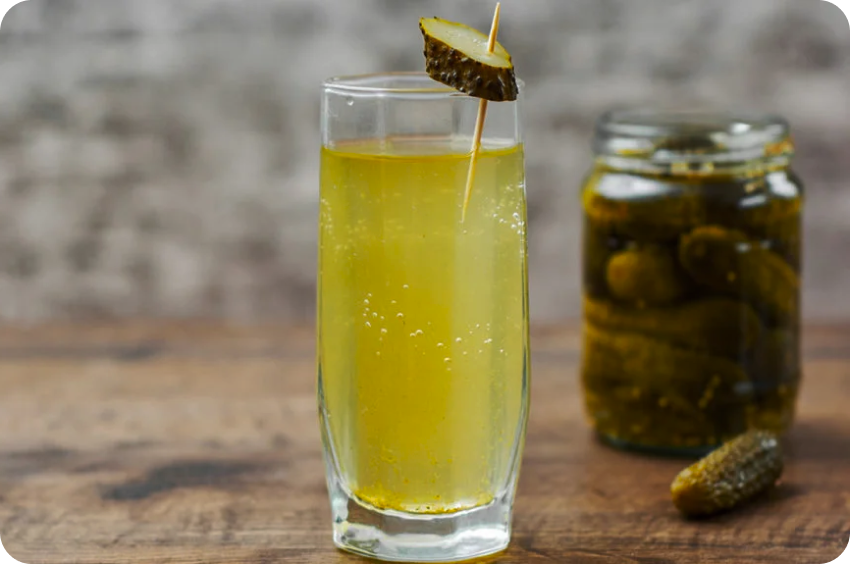
This could explain why other sharp-flavored remedies, like mustard or hot sauce, might have a similar effect.
At the end of the day, though, muscle cramps are complicated.
They often go away on their own, and since there are different reasons why they happen, there’s no one-size-fits-all cure.
But if pickle juice or mustard works for you, it might be worth keeping around for those unexpected cramps!
Training and Recovery
One of the main reasons behind muscle cramps is muscle fatigue.
To prevent it, you want to gradually build up the intensity of your training.
Take it slow.
Start with shorter, slower runs and gradually increase your speed and distance. This helps your muscles adapt and grow stronger without overloading them.
Listen to your body. Rest is just as important as training. If your muscles are tired or sore, give them a break.
And remember to cool down properly.
Taking a few minutes to stretch and let your muscles recover after a run can reduce cramping later.
Exercises to Prevent Muscle Cramps
If you’re experiencing muscle cramps when running, there are some simple exercises that can make a big difference.
Stretching and strengthening key muscles can help prevent cramps and keep you running smoothly.
Stretching Exercises
- Standing Calf StretchStretching your calves can prevent tightness, which is often a culprit when cramps hit.Stand facing a wall, step one leg back with the heel on the ground, and feel the stretch. Hold for 20-30 seconds, then do on the opposite leg.
- Hamstring StretchTight hamstrings are a common issue for runners and can lead to cramps if not stretched properly.Sit with one leg extended and reach toward your toes. Hold for 20-30 seconds and then switch legs.
- Quad StretchStretching your quads (the front of your thighs) can help keep them from cramping up mid-run.Stand on one leg, pull your opposite foot toward your butt, and hold it there. Keep your knees close. Hold for 20-30 seconds and switch sides.
- Hip Flexor StretchTight hips can mess with your running form, causing cramps in your legs.Kneel on one knee with the other foot in front and push your hips forward gently. Hold for 20-30 seconds on each side.
- Dynamic Stretches Before RunningMoving your muscles through dynamic stretches before running helps get them ready and reduces the chance of cramps.Try leg swings, walking lunges, or high knees to warm up your muscles before you hit the road.
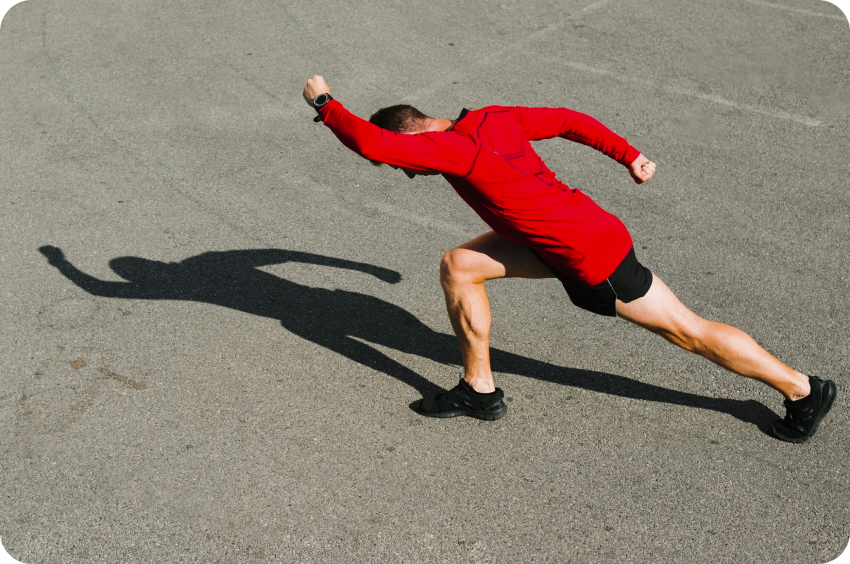
For more stretching exercises, check out our recent article on Top 7 Stretches for Runner’s Knee.
Strengthening Your Muscles
Strong muscles are less likely to cramp. Adding some strength training to your routine can go a long way.
Incorporate exercises like calf raises and squats into your workouts. These target the muscles that often cramp up, helping to prevent them from getting overworked.
Don’t forget about your core and glutes.
Strengthening these areas can improve your running form, making it easier for your muscles to perform efficiently and cramp less often.
Strengthening Exercises
- Calf RaisesYour calves do a lot of work when you run, so strengthening them can help stop those annoying cramps.Stand on flat ground, rise up onto your toes, then slowly lower back down.Try for 2-3 sets of 12-15 reps. It’s simple but super effective.
- SquatsSquats are great for your quads, hamstrings, and glutes—all the muscles that keep you moving. Stronger legs mean fewer cramps.Stand with your feet shoulder-width apart. Lower yourself down like you’re sitting in a chair, then come back up.Do 2-3 sets of 10-12 reps.
- LungesLunges strengthen your legs and improve balance, which can help prevent muscle fatigue that leads to cramps.Step forward into a lunge, then alternate legs.Go for 10 reps on each side.
- PlanksA strong core helps keep your form in check when running, which can help prevent cramps.Hold a plank on your elbows and toes for 30-60 seconds.Aim for 2-3 rounds. It’s tough, but it pays off.
- Glute BridgesThese work your glutes and reduce the strain on your hamstrings and calves, which can help keep cramps away.Lie on your back with your knees bent, lift your hips, and squeeze your glutes. Hold for a few seconds, then lower down.Try 2-3 sets of 12 reps.
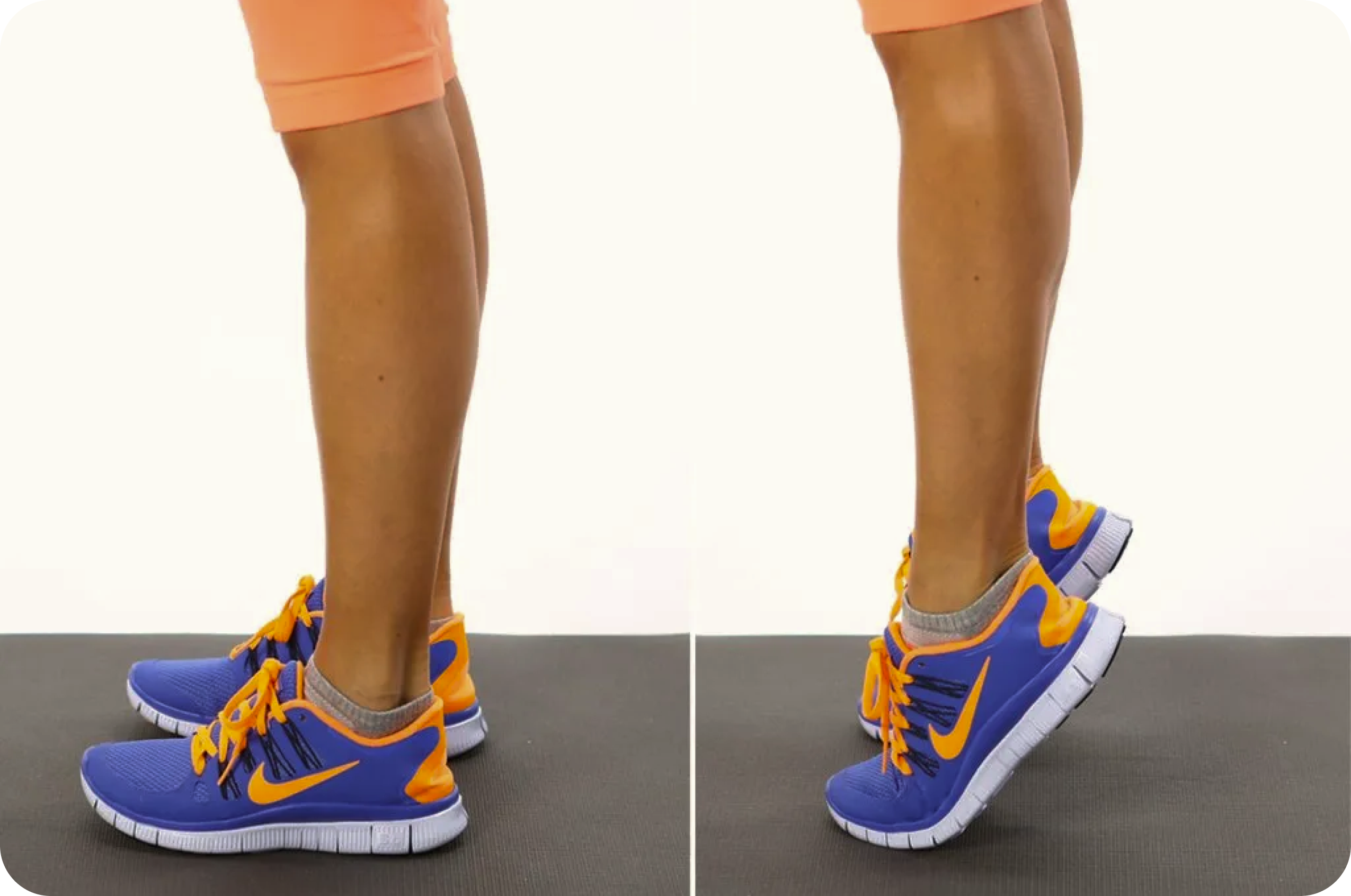
What to Do If You Experience a Muscle Cramp
Muscle cramps can catch you in the middle of a run.
But don’t worry — there are a few simple things you can do to ease the pain in the affected muscle and get back on track.
First, you need to slow down and breathe deeply. The first thing to do is slow your pace or stop altogether.
Incorporate deep breathing and take a few steady breaths. This helps calm your body and can reduce the intensity of the cramp.
Then, you can stretch the muscle to increase blood flow.
Simply gently stretch the muscle that’s cramping.
If it’s your calf, for example, try a standing calf stretch. Stretching helps relieve the tension in the muscle and encourages it to relax.
Don’t force the stretch, ease into it and hold it for about 20-30 seconds.
If stretching isn’t enough, try applying pressure to the cramping area.
Use your hand to gently massage the muscle, or if it’s too painful, apply firm pressure with your thumb or palm.
This can help relax the muscles and ease the discomfort. And don’t forget about the proper breathing technique — deep, steady breaths can help reduce pain.
Remember, cramps usually pass in a few minutes, so give yourself time to recover before picking up the pace again.
If the cramp persists, it might be best to take a break and let your leg muscles fully relax before continuing.
When Should You Seek Medical Attention?
There is no one and sure way to treat muscle cramps. Usually, they end within a few minutes.
However, there might be cases when looking for professional help is a good choice.
Frequent or severe cramps could be a sign that something’s not quite right. If your cramps happen often or are unusually painful, it’s a good idea to see a doctor.
Consult a doctor or physical therapist to rule out any underlying medical conditions, like nerve issues or circulation problems, that could be causing your cramps.
Review your training and nutrition with a healthcare professional. They can help you identify any gaps in your routine — like a lack of electrolytes or overtraining — that might be contributing to the problem.
It’s always better to be safe, especially if your cramps are interfering with your training or daily life.
A quick checkup can give you peace of mind and help prevent future issues.
Check out this base running training plan to level up your endurance and performance.
Conclusion
Cramps occur due to many reasons.
Some of the reasons that cramps happen when running could be due to overeating before a run, poor stretching, dehydration, and insufficient carbohydrate intake.
These factors can cause severe muscle cramps in your legs and calves.
How to prevent cramps while running?
Unfortunately, there is no one clear answer.
You might want to first identify the reason behind cramping: is this dehydration or muscle fatigue?
Consume plenty of water and electrolytes, stretch and strengthen your muscles, and remember to rest properly.
If muscle cramps catch you in the mid run, the best thing you can do is to stretch the affected muscle.
If cramping is a regular issue for you, and nothing really helps, then it might be a good choice to consult a professional coach.
